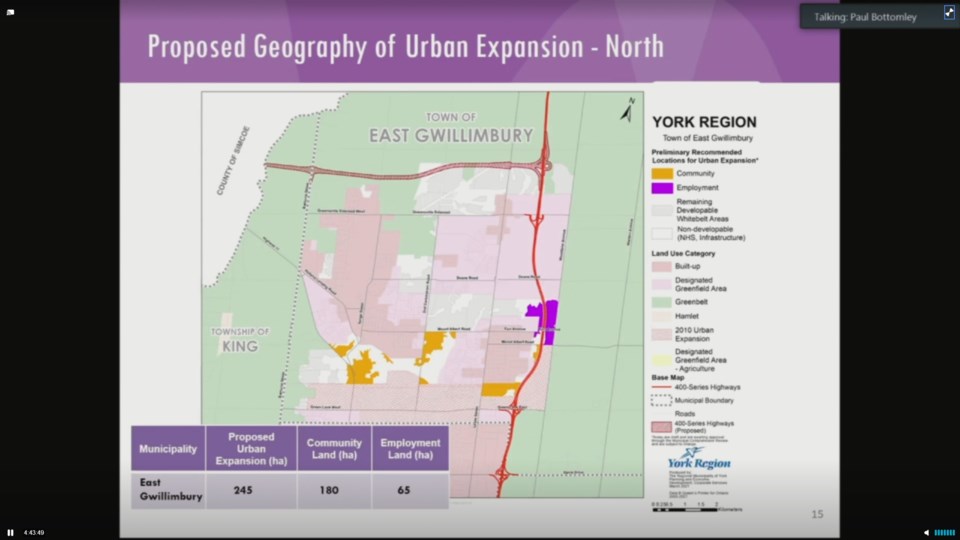Although York Region is expected to see the highest portion of population growth in the Greater Toronto Area over the next 30 years, Newmarket is not expected to see the same explosive growth as some other communities in the region.
York Regional council received a report today containing a forecast for the population growth expected by 2051, and how much land it will take to accommodate the new larger population, and where it can be found.
According to the report, York Region is expected to add another 800,000 residents, with Newmarket's population to grow from 90,000 to 110,000 by 2051. But by that year, the population of East Gwillimbury — currently about 31,100 — is anticipated to be almost as large.
Part of the reason for East Gwillimbury's explosion of growth is because it is one of three areas identified in York Region where land is being designated for future urban growth. The other two areas are in Vaughan and Markham.
None of the identified lands are in the environmentally protected Greenbelt.
The report identified a total of 245 hectares in East Gwillimbury, just north of the boundary with Newmarket, for future urbanization as the population continues to grow over the next 30 years.
Although Newmarket will grow consistently over the next 30 years, it will grow at a much slower pace than it has been for the past 20 years. In contrast, communities such as East Gwillimbury, Georgina, Vaughan and Whitchurch-Stouffville are expecting to see their growth reach new highs in the coming decade, according to Paul Bottomley, York Region manager of policy, research and forecasting.
"Most of the growth in Newmarket will be through intensification," said Bottomley. "Newmarket and Aurora have smaller land area and limited greenfill (urban expansion) potential will show relative declines in their growth."
A similar decline is expected in Newmarket's job growth rate for much the same reasons, as the new urban development and the jobs that go with it will be taking place mostly in other communities.
By 2051, York Region will need 3,300 hectares (23 square kilometres) of new urban space to accommodate the new population. This land is being designated as employment land, which provides jobs and community land for housing.
The report identified available hectares in several different communities:
- East Gwillimbury 180 community, 65 employment
- Markham 1,270, community, 220 employment
- Whitchurch-Stouffville 280 community, 95 employment
- Vaughan 500 community, 710 employment
- King 70 community, 10 employment
The cost of servicing the new urban areas will require spending of $11.6 billion on new infrastructure over the next few decades, which Bottomley said means the region needs an integrated plan to govern how that will work.
